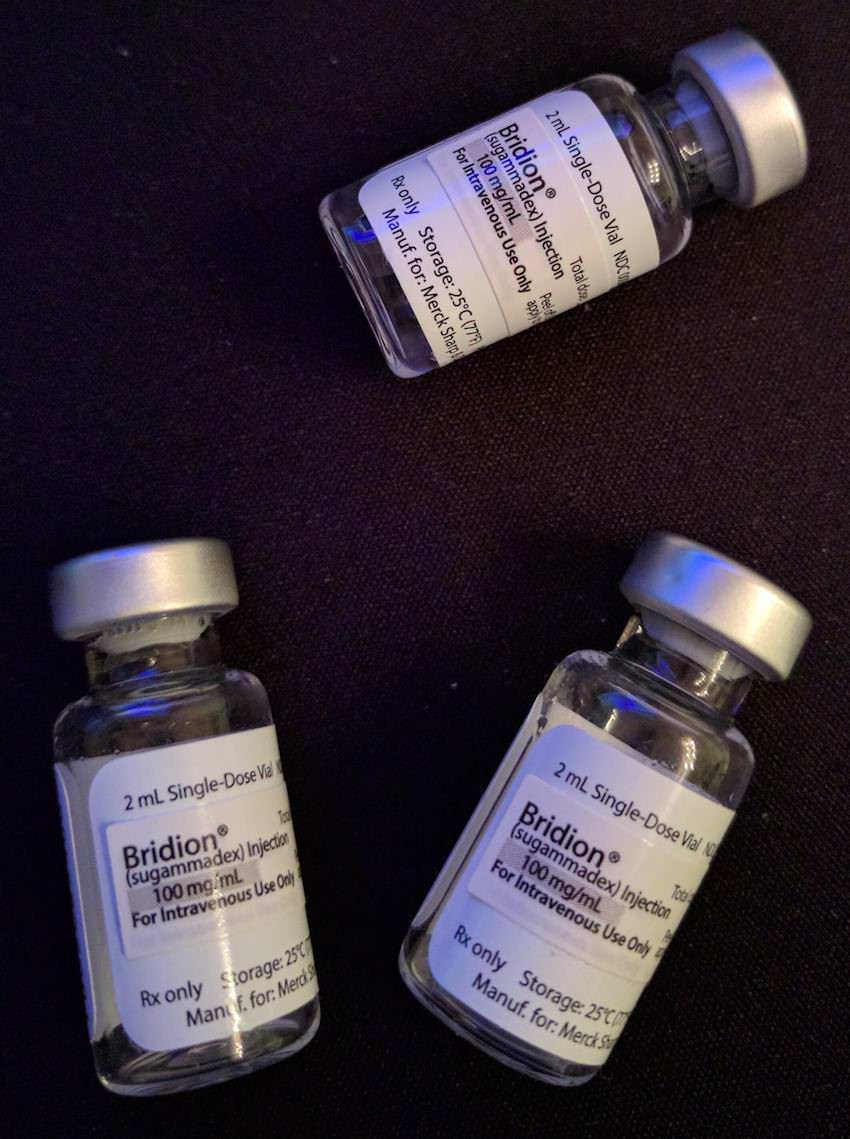Merck hosted our first journal club of the academic year yesterday evening at Sullivan’s Steakhouse. The topic: “Clinical Considerations in Neuromuscular Blockade Management” with an emphasis on sugammadex (Bridion).
For years, this drug has been used in other parts of the world as a reversal for neuromuscular relaxation due to rocuronium/vecuronium. I’ve previously written about sugammadex when its approval was rejected by the FDA for unresolved hypersensitivity reactions Our speaker was actually involved in many of the clinical trials which finally led to its approval by the FDA in late 2015.
We discussed how the sugammadex molecule is an inert cyclodextrin which selectively binds rocuronium and vecuronium aminosteroids in a 1:1 complex that is excreted through the kidneys nearly unchanged. The drug is therefore not recommended for those with severe kidney disease (or ESRD). Additionally, the hypersensitivity concerns are rare and more likely with higher doses.
The speaker reviewed our traditional modality for assessing neuromuscular block depth: the train-of-four (TOF) on a peripheral nerve stimulator. Depending on the depth of blockade, various doses of sugammadex (2 mg/kg, 4 mg/kg, 16 mg/kg) would be required for adequate reversal. Apparently, there have been no reports of side effects from an overdose of sugammadex either.
What I found most interesting was the time to neuromuscular recovery after a rapid-sequence induction (RSI) with intravenous succinylcholine (1 mg/kg) versus rocuronium (1.2 mg/kg) followed by sugammadex reversal (16 mg/kg). Rocuronium was reversed ~4-5 minutes after the initial bolus (~1-2 minutes after the administration of sugammadex) whereas succinylcholine lasted up to 10 minutes in some patients.
I think this is invaluable for emergent airways where the use of succinylcholine may be contraindicated. Give an RSI dose of rocuronium, attempt intubation, and if there’s a concern about being unable to intubate, push 16 mg/kg of sugammadex for rapid reversal of paralysis. Neat! 🙂
As a new drug on the market, cost will limit its clinical application at many hospitals; however, this is certainly a medication which should be stocked in every “airway box” and used in urgent/emergent situations. I myself have used sugammadex once during residency, and it was remarkable to see the TOF ratio return to baseline within two minutes!
Hopefully as the price drops in the coming years, its applications will extend beyond the operating room and into the ICUs, emergency centers, etc.






